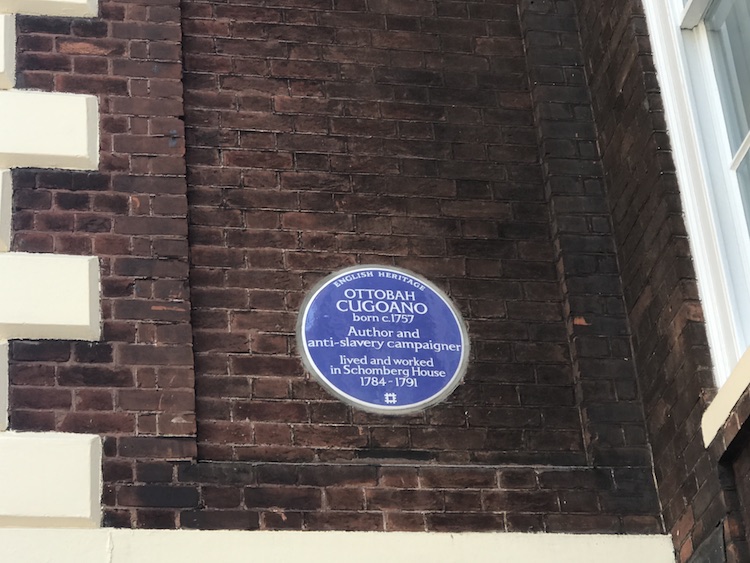
Much of the narrative on the abolition of the slave trade in the British Empire is framed by the actions of the white British campaigners – Josiah Wedgewood; Wilberforce, Thornton and the ‘Clapham Sect’ – with the voices and deeds of former slaves either pushed to the background or disregarded entirely.
However, in recent years the life and works of Olaudah Equiano has become better appreciated. Equiano was a former slave from the Kingdom of Benin, who lived in London as a free man and who published an autobiography that helped publicise the horrors of slavery and of the slave trade to Georgian society.
And in November 2020, English Heritage unveiled a plaque on Schomberg House in Pall Mall (a building about which there are lots of stories, but those can wait for another time), honouring another former slave, Ottobah Cuguano.
Cuguano was captured in the Gold Coast (now Ghana) in 1770 when he was around 13 years old, and transported to Grenada in the West Indies. Bought by a merchant, he was brought to England, where he learnt to read and write and was ‘freed’. He later became a servant to the artists Richard and Maria Cosway, who then lived in Schomberg House (and whose next door neighbour was the artist Thomas Gainsborough).
Cuguano became active in the abolitionist group the ‘Sons of Africa’ (sometimes described as being Britain’s first black political movement) – and organisation (which included Equiano) of ‘educated Africans’, whose members campaigned against slavery through their writings, public meetings and correspondence in newspapers.
In 1787 Cuguano published Thoughts and Sentiments on the Evil and Wicked Traffic of the Slavery and Commerce of the Human Species which called for the abolition of slavery and the immediate emancipation of enslaved peoples.
He is thought to have died in 1791 or 1792. It is perhaps typical of the times that his death passed unremarked and we have no knowledge of his grave.

